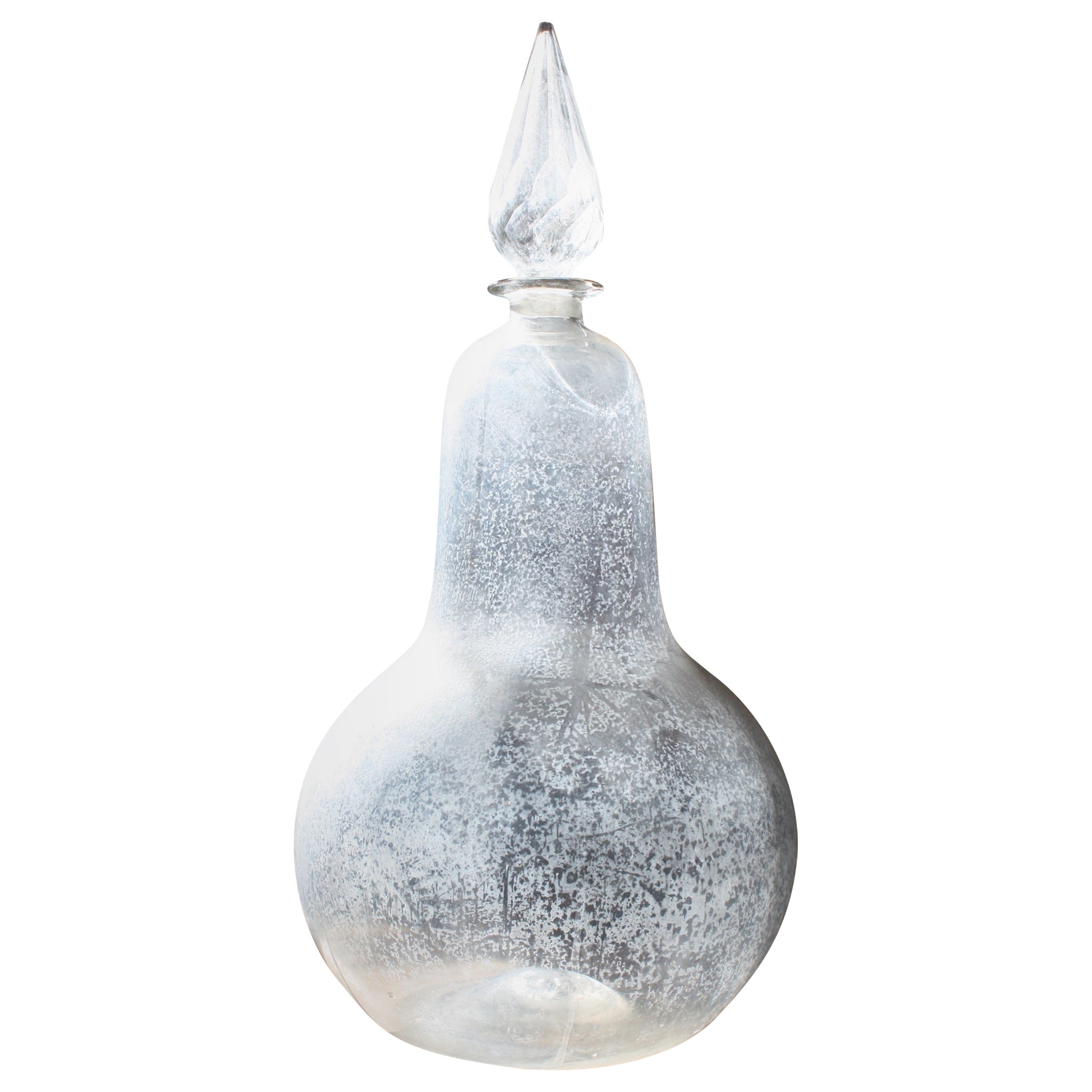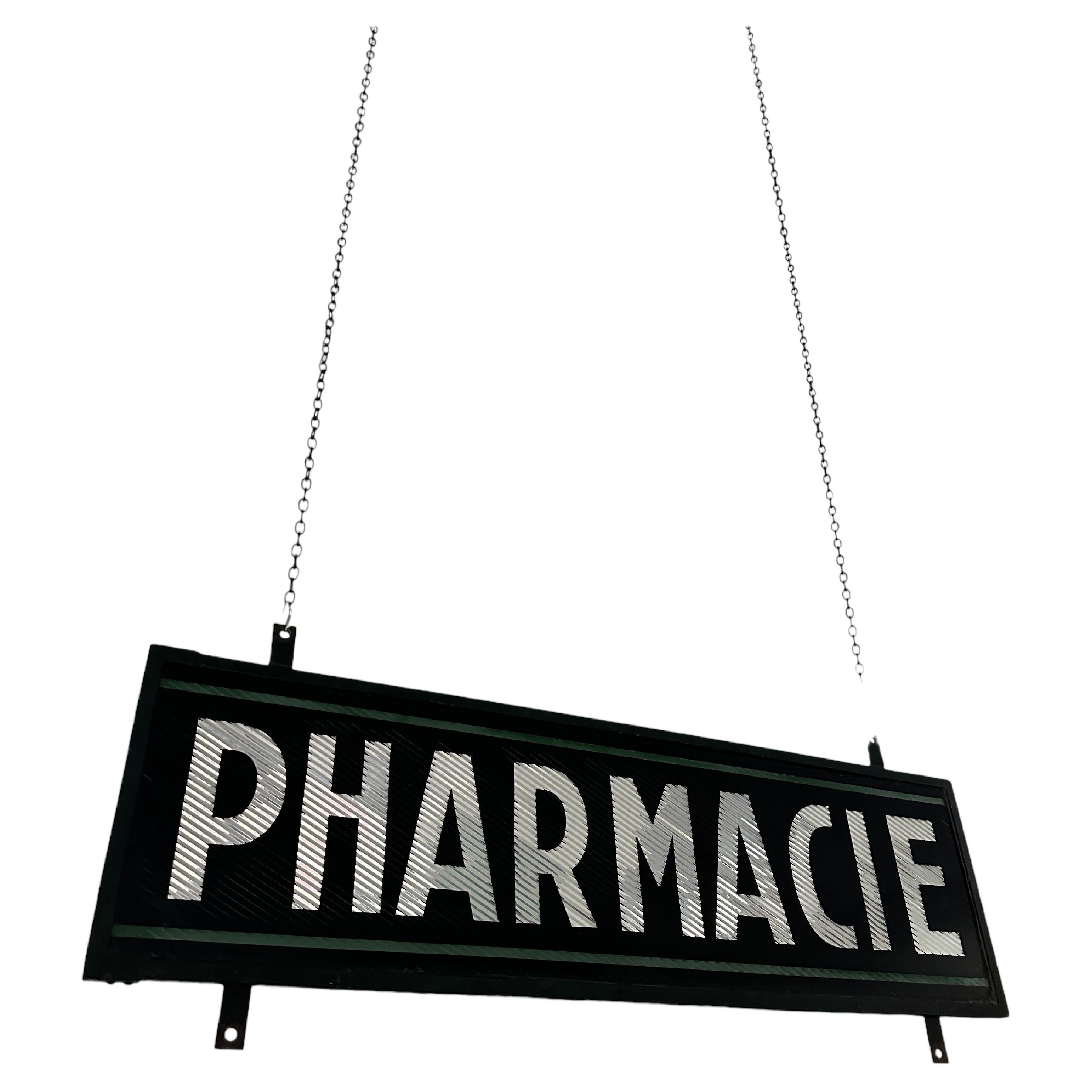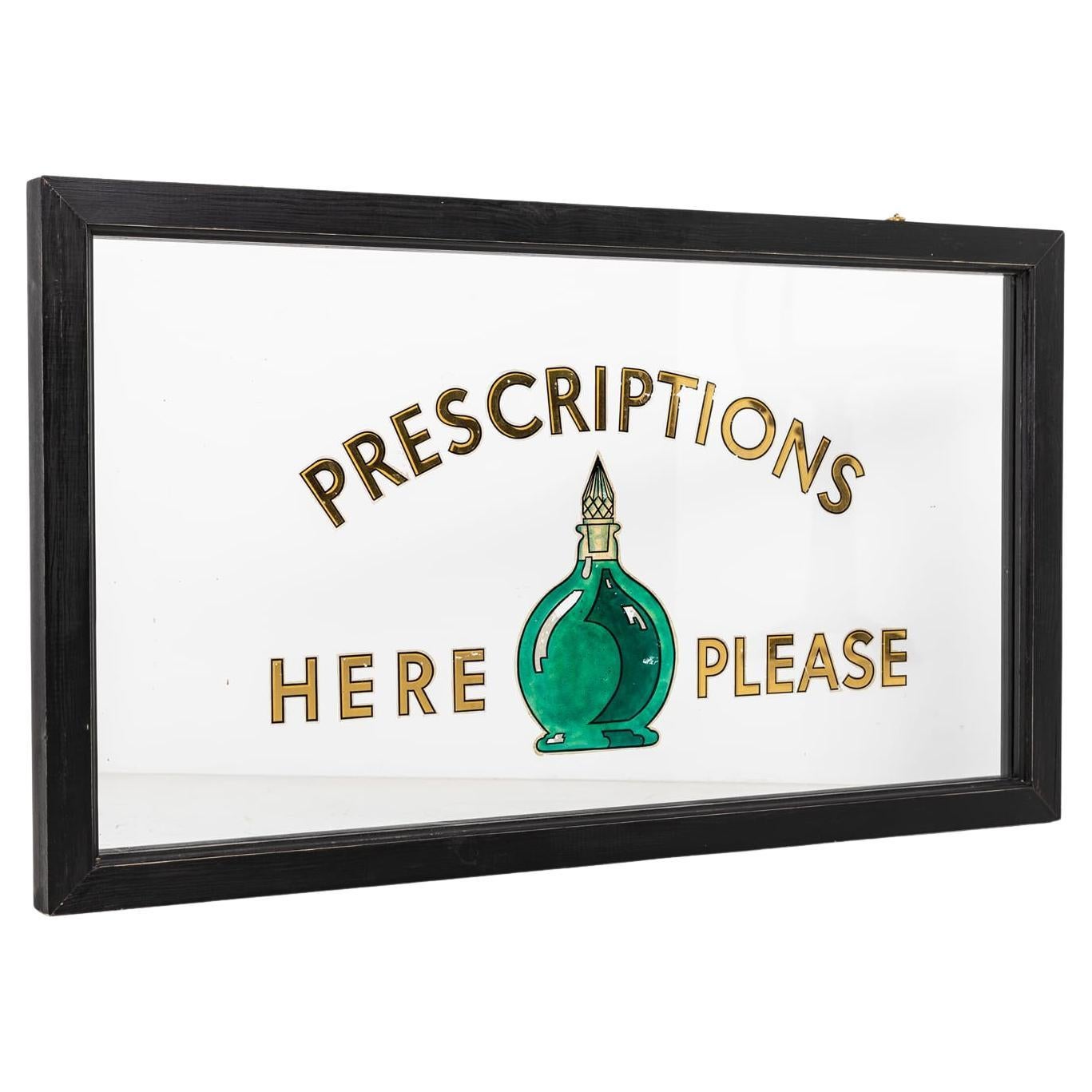Items Similar to 19th Century Regency Hand Blown Chemist Pharmacy Apothecary Display Carboy Sign
Want more images or videos?
Request additional images or videos from the seller
1 of 9
19th Century Regency Hand Blown Chemist Pharmacy Apothecary Display Carboy Sign
About the Item
A very early 19th century chemist display carboy, circa 1820 possibly earlier
The bulbous center sits on a stepped base with a swan like neck and a fine cut glass oversized stopper
The piece has been hand blown with pontil mark on the base, and is in perfect condition
These where used originally used as early trade signs for pharmacy's prior to when the majority of the population couldn't read, later used as decorative shop displays
The liquid we have placed within for display purposes, its florist liquid that comes in a multitude of colors, the liquid would be disposed off for transit,
Approximate 110cm in height
133cm in circumference
40cm in diameter at base.
- Dimensions:Height: 43.31 in (110 cm)Diameter: 15.75 in (40 cm)
- Style:Regency (Of the Period)
- Materials and Techniques:Blown Glass,Cut Glass
- Place of Origin:
- Period:
- Date of Manufacture:circa 1820
- Condition:
- Seller Location:Lowestoft, GB
- Reference Number:1stDibs: LU4612114453471
About the Seller
5.0
Platinum Seller
These expertly vetted sellers are 1stDibs' most experienced sellers and are rated highest by our customers.
Established in 2013
1stDibs seller since 2019
161 sales on 1stDibs
Typical response time: 1 hour
- ShippingRetrieving quote...Ships From: Lowestoft, United Kingdom
- Return PolicyA return for this item may be initiated within 14 days of delivery.
More From This SellerView All
- 19th Century Large Apothecary Chemist Carboy Pharmacy Shop Trade SignLocated in Lowestoft, GBA 19th century hand blown glass chemist window display carboy. Used as a symbol of the pharmacy from the 17th century to the early 20th century. A rare example with a hollow cut ...Category
Antique Mid-19th Century English Signs
MaterialsBlown Glass
- Early 19th Century Chemist Apothecary Drug Pharmacy Drawers Bratley PontefractLocated in Lowestoft, GBA truly wonderful run of chemist drawers, originally made for and housed at Bratley Chemist, Pontefract. Pine carcass with a fine mahogany veneer, o...Category
Antique Early 19th Century English Commodes and Chests of Drawers
MaterialsGlass, Pine
- 19th Century French Art Nouveau Verre Églomisé Gilt Trade Shop SignLocated in Lowestoft, GBOf striking composition, a reverse painted and gilt trade sign, late 19th century (circa 1890) in age French in origin. The sign has typical Art Nouveau organic flowing forms and...Category
Antique 1890s French Art Nouveau Paintings
MaterialsGlass, Hardwood
- Late 19th Century Cigar Store Carved Wooden Indian Tobacconist Trade SignLocated in Lowestoft, GBA life size carved pitch pine cigar/tobacconist trade sign/point of sale in the form of an Indian. Often placed outside of a shop, the cigar store Indian became less common in the 20...Category
Antique Late 19th Century American Signs
MaterialsSteel
- Impressive Huge 19th Century Pawnbroker Folk Art Sign with Three Spheres SymbolLocated in Lowestoft, GBAn impressive rare and monumental in scale folk art pawnbroker trade sign with its original trio of giltwood spheres which represent the universal symbol for the pawnbroker trade. ...Category
Antique Mid-19th Century English Victorian Signs
MaterialsWrought Iron
- Late 17th/Early 18th Century Polychrome Tobacconist Figure Sign Folk Art CarvingLocated in Lowestoft, GBA large carved and polychrome painted tobacconist's figure almost certainly 17th or early 18th century For a related example see Edward H. Pinto, Treen and other Wooden Bygones, Bell and Hyman, London 1969. Page 412, plate 436. Originally this may well have been a tobacconist's shop window figure. For a similar, but slightly earlier unpainted example, see Sotheby's, The W. J. Shepherd collection of treen, 30th November 1983, Lot 393, illustrated in Pinto "Wooden Bygones of Smoking and Snuff Taking", plate 1. Carved wooden figures, often painted, were placed outside tobacconist's shops as signs from the 17th century onwards. The earliest of these figures is the 'black boy' or 'blackamoor'. 'At the sign of the black boy' or 'at the sign of the blackamoor' was a popular address for tobacconists since the early 17th century. The 17th century figures...Category
Antique 17th Century English Sculptures and Carvings
MaterialsPine
You May Also Like
- Antique Vintage French Double Sided Glass Pharmacy Chemist Apothecary SignLocated in Sale, GB- A beautiful and rare double sided glass 'Pharmacie' sign mounted in its original frame, France circa 1930. - The sign is of exceptional quality and has glass to both sides, light w...Category
Early 20th Century British Signs
MaterialsGlass
- 19th Century, Apothecary Trade SignLocated in Nantucket, MAFigural trade sign in the form of a mortar and pestle, both the mortar and pestle are hand turned and gilded, with strong ring turnings. The top is capped with zinc and still bears i...Category
Antique Late 19th Century North American Folk Art Signs
MaterialsZinc
- 19th Century Large Size Gilded Pharmacy Sign from PennsylvaniaLocated in Atlanta, GAA 19th century gilded pharmacy sign of large dimensions from Pennsylvania made of gold painted zinc and representing pestle and mortar, circa 1850s-1880s.Category
Antique 19th Century American Wall-mounted Sculptures
MaterialsGold, Zinc
- Antique Vintage Reverse Painted Glass Chemist Pharmacy Sign, C.1930Located in London, GBAn elegant reverse painted glass chemist's sign. c.1930 Gilt lettering and green carboy, reverse painted on clear thick plate glass. Set into a simple ebonised wooden frame.Category
Early 20th Century English Art Deco Signs
MaterialsGlass, Wood
- 18th Century Apothecary SignLocated in Napa, CA18th Century Apothecary sign was created with wrought iron, fer forge. Beautiful details of the medical symbol of a winged staff with two snakes intertwined.Category
Antique 18th Century and Earlier Italian Signs
MaterialsWrought Iron
- 19th Century Apothecary Mortar & Pestle Countertop Trade Sign or Sale StimulatorLocated in Chapel Hill, NCApothecary trade sign or sale stimulator in the form of a mortar and pestle in gilt wood. The mortar of cylindrical waisted form with a central half round band and stepped rings at t...Category
Antique Late 19th Century American Folk Art Signs
MaterialsWood
Recently Viewed
View AllMore Ways To Browse
Signed Glass
Sign England
Shop Sign
Antique Glass Signs
Antique Glass Sign
Signed Regency
Hand Blown Art Piece
Signed Cut Glass
19th Blown
Antique Shop Signs
Antique Shop Sign Signs
Antique Shop Sign
Regency Display
Shop Sign 19th Century
Antique Shop Display
Fine Blown Glass Art
Blown Art Glass Purple
Glasses Trade Sign





